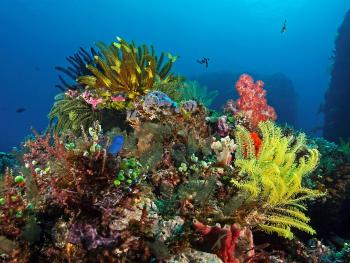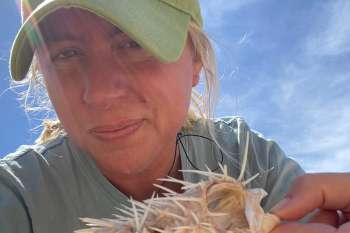Includes: Polychaetes, Earthworms, Leeches
Far from being lowly worms, annelids are remarkably powerful and capable animals. An annelid’s body is divided into segments or sections, which can be seen on the outside of the body as rings.
Annelids have a circulatory system to distribute blood and oxygen. And their one-way gut, running from one end of the body to the other, was a major evolutionary step. With this digestive tract, food can be continuously taken in by the mouth, processed as it passes through the body, and released as waste at the other end. Not only can worms continually digest their food, but they also can squirm, crawl and slither as they digest.
Annelids creep along or burrow by coordinating two sets of muscles. One set allows them to expand and anchor one segment of their body. The other set of muscles contracts and pushes the rest of the body forward into the dirt or mud. By alternating these two muscle sets, the worm can powerfully inch forward. They anchor their bodies with bristle-like structures on the outside of the segments.
Annelid Features:
- Elongate and bilateral with segmented true body cavity (coelom)
- Complete circulatory system with capillaries, arteries and veins
- Body wall made of circular and lengthwise muscles
- Continuous gut running from mouth to anus
- Bristle-like structures projecting from body called setae (except in leeches)
Annelid Fact:
If all the material that has moved through earthworms were piled up on the surface of the globe, the heap would rise 30 miles, more than five times the height of Mt. Everest.
Word Bank
Polychaetes: the largest group of annelids, most of which live in marine environments; they live in all the world’s oceans from the surface to the deepest parts of the ocean
Elongate: longer than wide
Bilaterally symmetrical: the right half is a mirror image of the left side
Capillaries: fine branching blood vessels
















